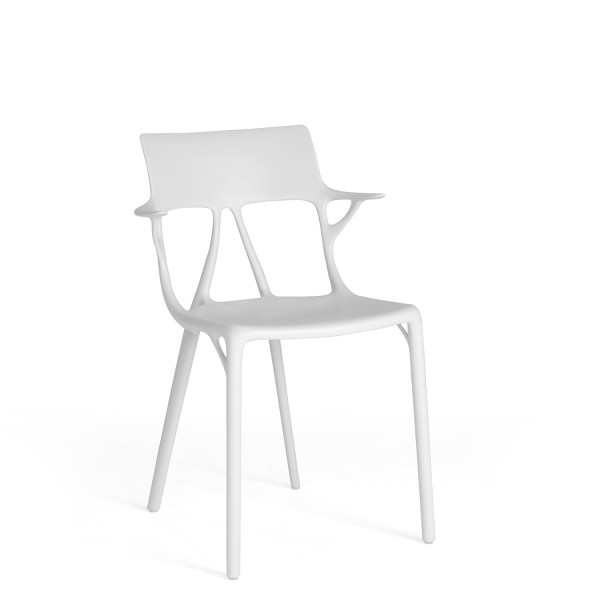What is AI?
Artificial intelligence transfers human learning and thinking to computers in defined objectives. The basis of AI is digitization and lots of data, including numbers, images, videos and audios, so anywhere data can be analyzed and searched for patterns, AI can be used. Artificial intelligence can analyze data better than humans, but cannot (yet) understand it or solve problems (strong AI). So-called weak AI has already entered our everyday life with algorithms. It is predetermined by the programmer, but learns independently to perform the task assigned to it. The capabilities of AI are expected to revolutionize our economy - up to one-third of total economic output is expected to come from artificial intelligence, as AI can pull information from data much faster and recognize patterns. Artificial intelligence is expected to support human work.
Man and machine
The relationship between humans and machines has never been free of tension - in modern times, machine strikers protested the deterioration of working conditions. Skilled workers destroyed mechanical looms to stop the advance of automation with its accompanying low wages. In fact, the loom, of all things, was one of the foundations of the computer. Frenchman Joseph-Marie Jacquard developed a mechanical loom in the early 19th century that worked on the basis of punched cards. This system led not only to the famous Jacquard weave, but also to the development of early computing machines.
AI at ETH Zurich
Artificial intelligence is considered the topic of the future. Currently, universities in Germany are also expanding their departments. Ahead is Switzerland: the ETH Zurich University of Applied Sciences has been dealing with machine learning and artificial intelligence as key research since October 2019. In October 2020, the ETH AI Center was added, which links researchers, entrepreneurs and politicians. At the Swiss university, faculty and students are looking at using in-house solar power for e-mobiles, quality management in production processes, hate speech online, and architecture and building technology. The university also collaborates with the company Vitra from Weil am Rhein. On the Vitra campus, students regularly tour the Vitra Design Museum's furniture collection, with the Eames Aluminum Chairs as one focal point. The students' task in the Summer Academy is to create a chair for the surrounding landscape (Experimental Landscape Furniture).
Examples of Artificial Intelligence in Everyday Life
In the area of public safety, examples of AI include facial recognition and anti-fraud software. For the field of communication, voice assistants, navigation systems, automatic phone service, and translation systems have proven successful. Artificial intelligence is used on smartphones and websites, as well as in social media, including personalized advertising. In the home, for example, robotic vacuum cleaners are helping. In research, wind power, early cancer detection, self-driving cars and talent scouts for sports are being tested. The use of AI in design is also new - some furniture of the future is likely to be created by AI and support the creativity of designers.
Furniture design and AI
The first piece of furniture made using AI is believed to be the Kartell AI chair in February 2020. AI stands for Artificial Intelligence - the English term for AI. The chair was designed by designer Philippe Starck in cooperation with the company Autodesk. Autodesk provides 3D technologies for design and manufacturing, including architecture. Artificial intelligence did not replace the designer, but calculated the optimum in terms of quality, sustainability and comfort. The aesthetic sense of color and form was left to the designer. The computer received information about the seat, backrest and armrests of Starck's well-known Chair Louis Ghost. In addition, the material, weight, load-bearing capacity and possible costs were calculated by computer. From the numerous specifications, the program calculated possible variations. In the end, Starck chose a lightweight chair that uses minimal material and is made entirely of recycled plastic. You can find the Kartell AI and Louis Ghost in your pro office store, the latter also for children. Feel free to contact us.
Current trends: Experimental furniture projects and 3D printing
Current trends also include Experimental Furniture Projects by Dutch designer Joris Laarman and German designers Philipp Schmitt and Steffen Weiss. The chairs from the Chair Project of 2019 developed the technology from the shapes of classic seating furniture by itself. These chairs are pure art objects, possessing no functionality or quality of living. The Bone Chair made of aluminum by Laarman is exhibited in the leading design museums in Europe and in New York, organic design in the style of Art Nouveau and a minimum of material with safe stability characterize this chair.
Three-dimensional living: A house from the printer
On a side note: Last year (July 2021), the first residential building from a 3D printer was created in Beckum, North Rhine-Westphalia. Architect Waldemar Korte constructed the first single-family home from a concrete printer in Germany. A printer built a two-story, 160-square-meter single-family home in a very short time - It is quite conceivable that three-dimensional printing will also find its way into furniture design.



